If you're looking for maximalist drama in your yard, these 9 giant plants will give you instant living sculptures
Stunning forms and instant drama – according to experts these are the very best giant plants
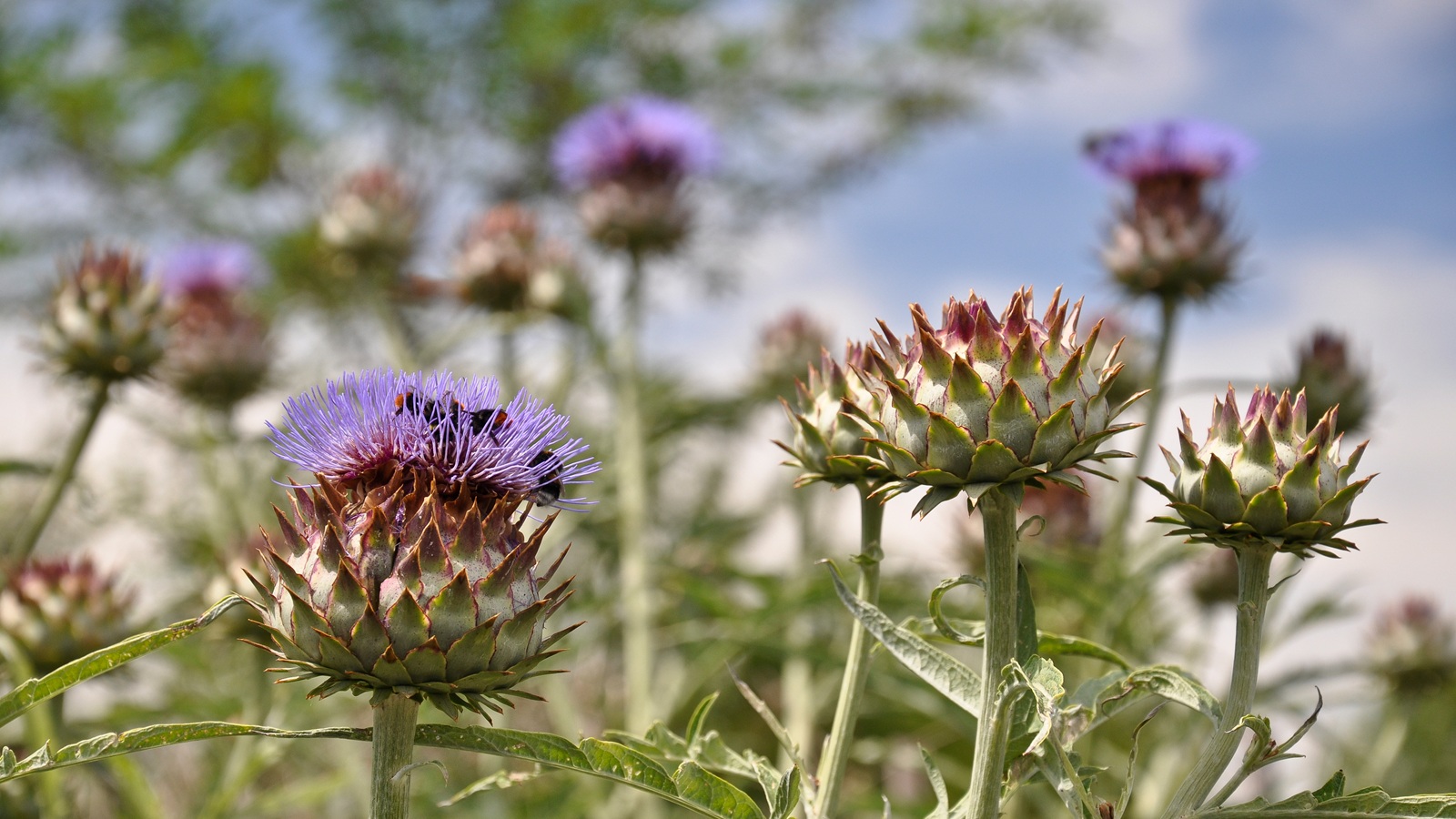

Upping the scale and including some giant plants in your yard is a great way to boost impact and interest. A trick long practiced by professional landscape designers, using towering, wide plants is a great way to expand your available growing space, effortlessly link your planting with the wider landscape and generally bring a real pro flourish to your outside space.
Besides making sound garden design sense, incorporating giant plants into your yard is a definite current trend. A logical extension of the recent interior decor trend for maximalism, this large scale, high drama, ramped up look is now permeating into our gardens, with supersized plants and full-on flower power.
If you are looking to boost your yard’s wow factor, then seize the opportunity to discover how to create a maximalist border and the best supersized plants to pep up your borders.
9 giant plants to grow for a living sculpture in your yard
Choosing giant plants to add drama, scale and sculptural interest to your garden can feel daunting, but there are plenty of tried and trusted beauties out there worth getting to know.
Globe Artichoke
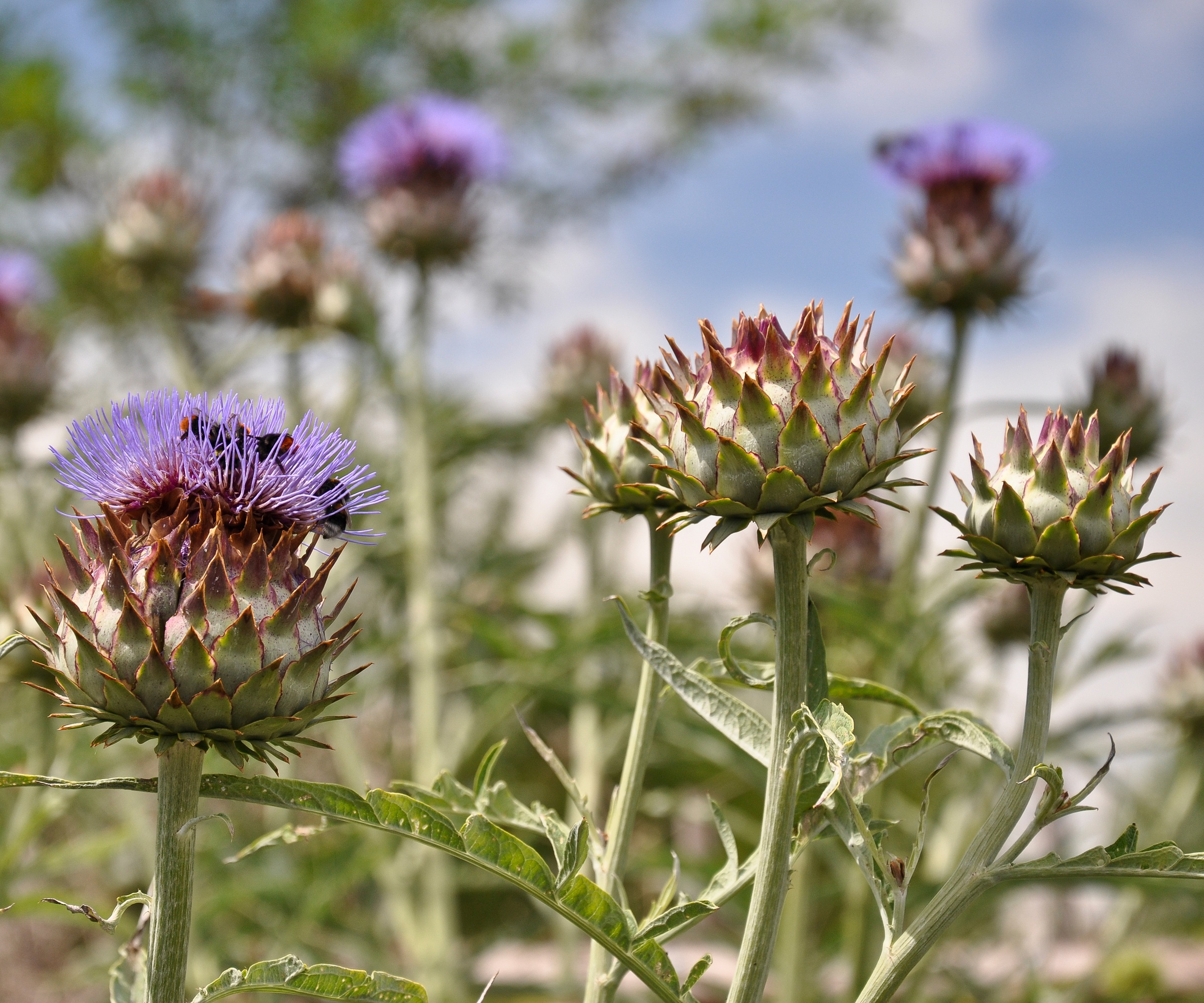
Not a plant to be overlooked, these stately perennials produce a fountain of jagged silver foliage and large, plump buds that open into purple thistle-like blooms.
Reaching the lofty heights of 3-5ft (1.5m), globe artichokes or Cynara cardunculus Scolymus Group make a dramatic statement at the back of a flower border or as a hedge or clump in the vegetable patch.
The unopened buds top each rigid stem and although they vary slightly in shape, size and coloring, depending on the variety, they make a stunning sight each summer. Of course, they are delicious too.
Design expertise in your inbox – from inspiring decorating ideas and beautiful celebrity homes to practical gardening advice and shopping round-ups.
Thriving outside in USDA hardiness zones 7-10, or raised as annuals in zone 6 or below, they need plenty of space in a sunny spot, with free-draining soil. Clump forming, globe artichokes will become congested over time, so lift and divide plants every four or five years and replant spaced generously apart.
Learning how to take artichoke cuttings is also worthwhile and a great way to obtain plants for free.
Varieties to look out for include the smoky purple buds of 'Violet de Provence', available as seed from Eden Brothers and heritage variety 'Green Globe', seeds available from Walmart.
Pride of Madeira
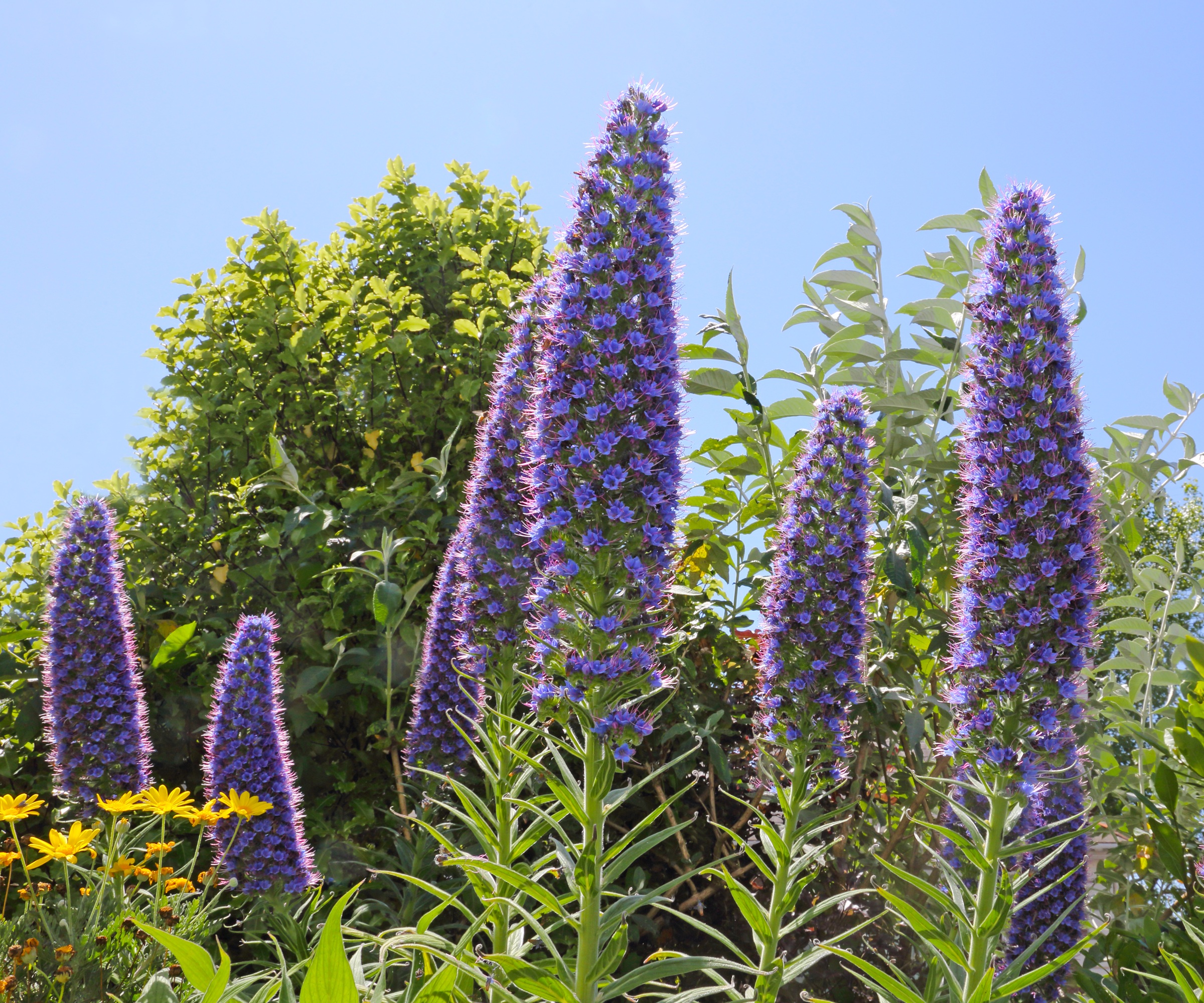
Chances are you that you recognise this plant from coastal vacations, but may not know its name, well its time to introduce Echium candicans, also known as pride of Madeira.
With sky-soaring floral spires smothered in tiny blue blooms during spring and summer, these plants are a magnificent sight, reaching up to 4’9” to 8’2” (1.5 - 2.5m), and quickly become a much-loved garden treasure.
If you've fallen for the distinctive blooms of the Echium, take time to find out how to grow blue flowers and add more head turning, cooler shades to your garden.
Suited to warm, coastal regions, Echium candicans will grow happily as a perennial in USDA hardiness zones 3a-10b but with extra care and protection it can also thrive in colder regions. These sun loving plants detest sitting in wet, cold conditions so avoid planting in low lying spots or areas prone to waterlogging.
Growing up to 20” long (50.8cm), the flower spires are magnets for bees, butterflies and hummingbirds, so why not plant a butterfly border and make echium a spectacular centrepiece.
Russian Sage
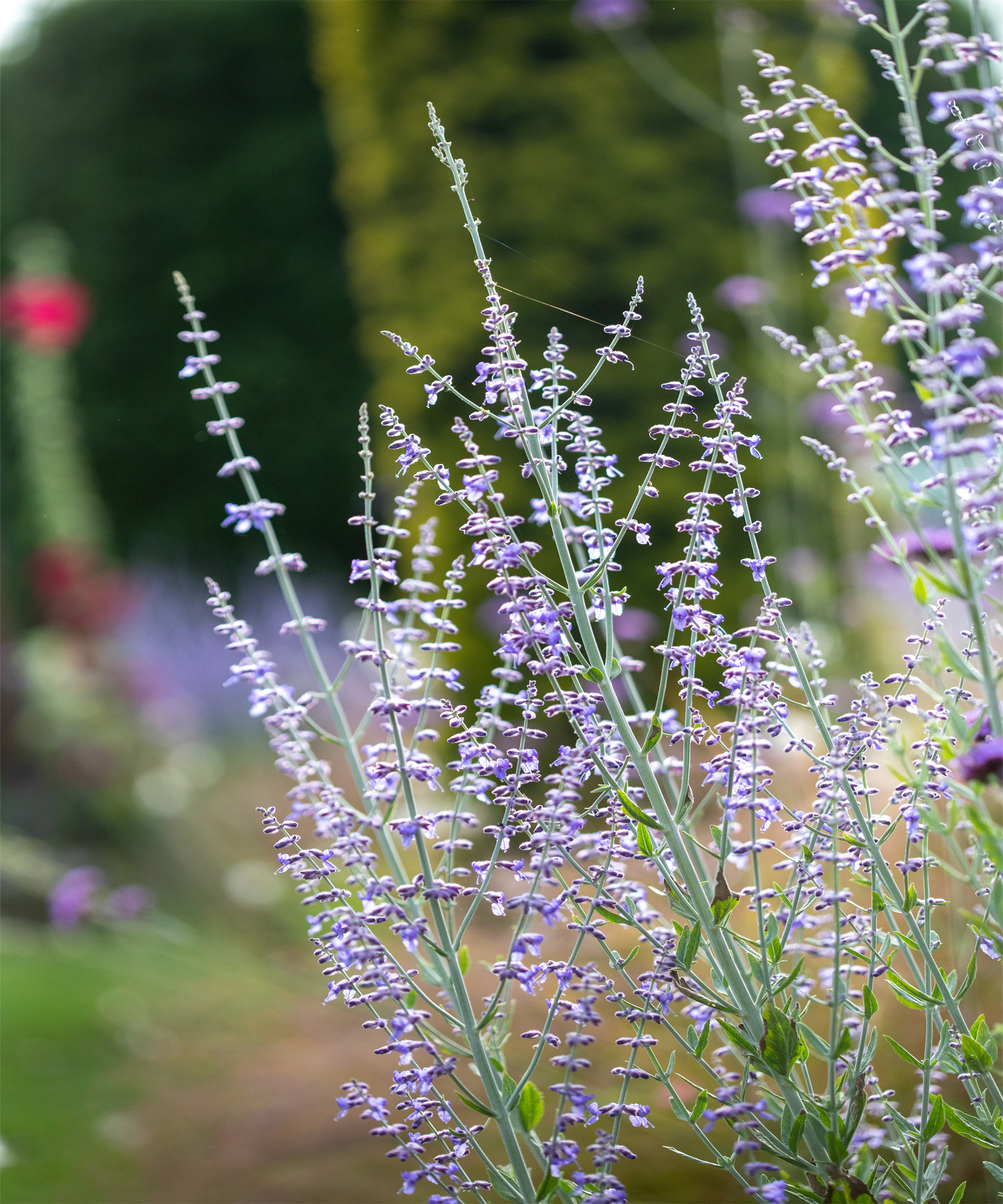
A fantastic tall and airy perennial, Russian Sage or Perovskia atriplicifolia is a hardy, drought-tolerant choice for the back of herbaceous borders. With slender silver white stems and mass of tiny violet-blue flowers appearing in summer and lasting until fall, it has an almost skeletal beauty making it a head turning contrast to other more floriferous plants.
‘Plant in clusters or staggered rows for a dense, wispy screen that adds color texture to your garden. Space plants about 2 feet apart.’ says Alexander Betz, founder Plant By Number Design.
‘This flower does best in full sun with well-drained soil but can tolerate poor soil conditions. Water young plants regularly until established, then water occasionally once mature. Cut back to the ground in late winter or early spring to encourage new growth.’
Growing to around 3-5 feet tall (91cm-152cm) with a spread of about 2-3 feet (61cm-91cm), perovskia is one of the best tall perennials and its often used for creating an attractive and aromatic, living divider. Suited to growing in USDA hardiness zones 4 – 9.
Giant Sea Holly
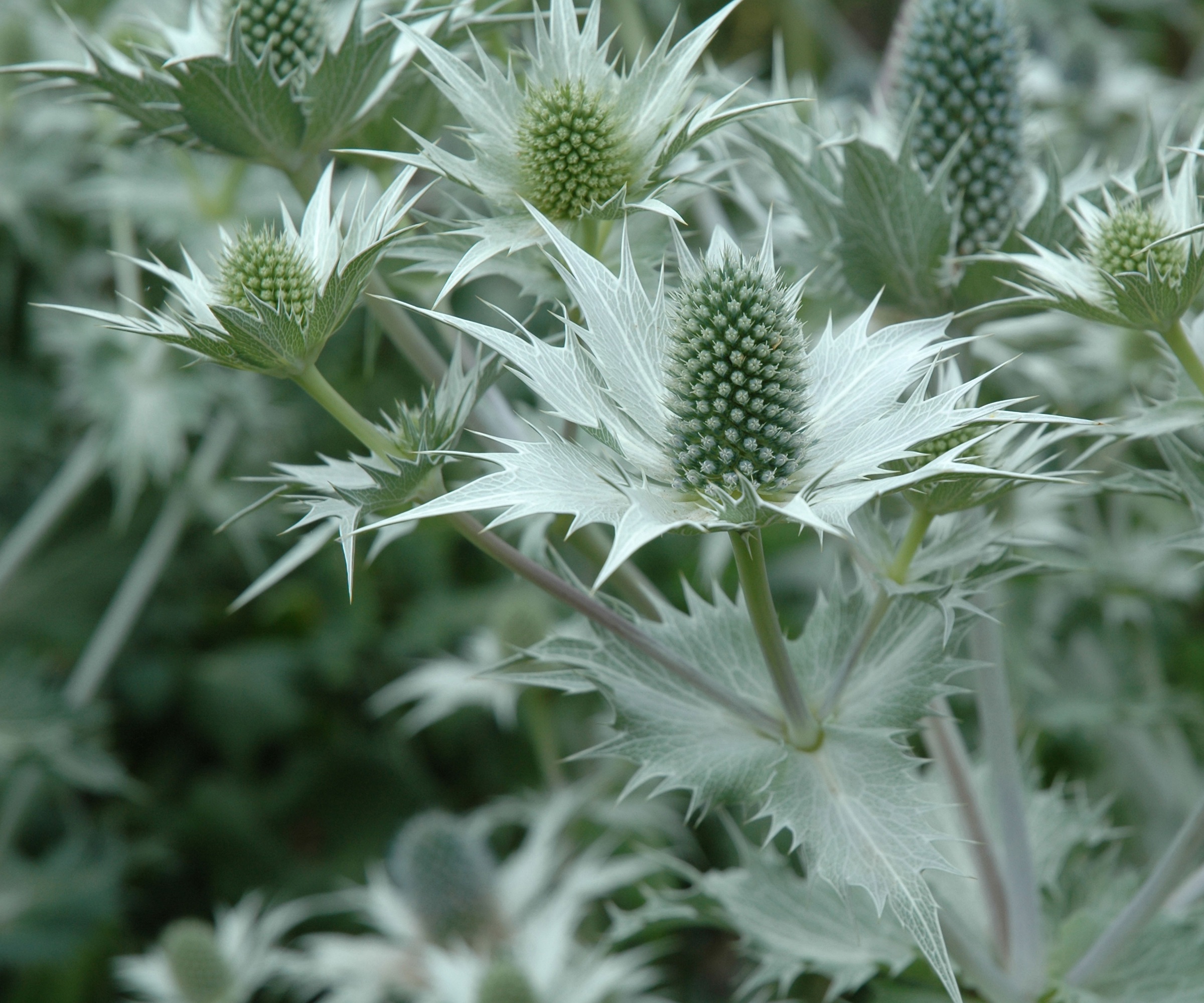
Branching silvery stems topped with spiny leaf rosettes and blue, white or cream thistle-like flowers make Giant sea holly a true statement plant. Also known as Miss Willmott’s Ghost or Eryngium giganteum, it is one of the best eryngium varieties to grow, with a fascinating shape and curious arrangement of jagged steely leaves.
Blue conical flowers appear from June to September, and attract masses of bees and other beneficial garden pollinators.
Growing up to 2’3” (70cm) with a spread of 12”(30cm), this is a magnificent perennial that needs space. Generally hardy in USDA zones 4 to 9, it’s a handy architectural addition to any sunny yard, and will tolerate poor, dry soil.
A brilliant contrast to softer grasses and clump forming blooms, try incorporating Giant sea holly into your drought tolerant front yard ideas and team it with other plants with silver foliage.
Giant Black Eyed Susan
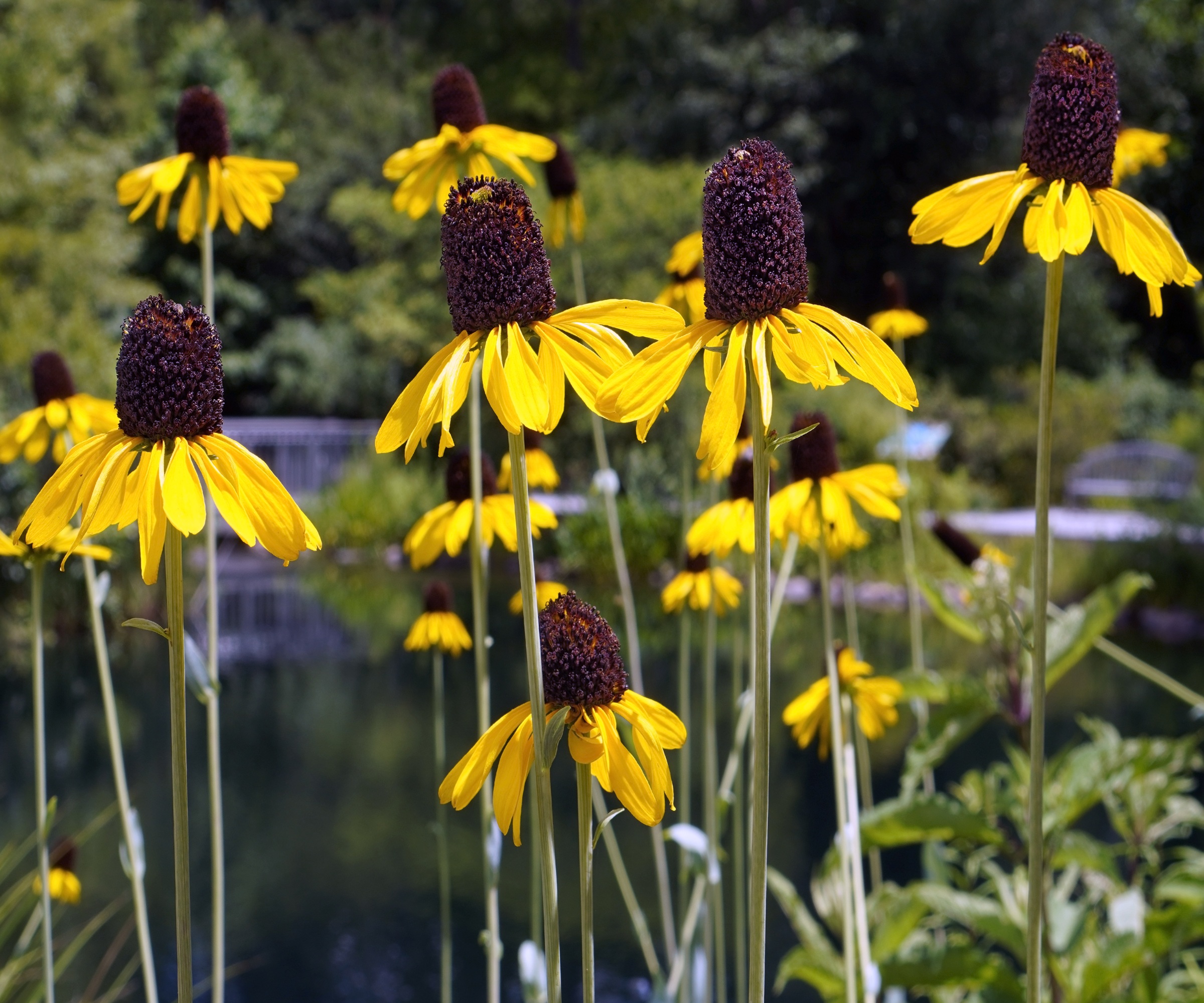
‘Giant Black Eyed Susan, also called Rudbeckia Maxima, lives up to its botanical species name as it is wildly tall up to 6 feet, and its massive glaucous blue tinged leaves make for serious wow factor,’ says Perennial and Bulb Expert, and American Meadows representative Megan Foster.
‘Its golden yellow flowers with prominent black cones rise above the foliage, attracting pollinators in summer and birds in fall as the seeds mature. Birds will thank you for introducing this to the back of your perennial borders!’
Sending up a mass of slender flower stems, the cheery late summer blooms hover up to 6ft (1.8m) above the mound of smooth, blue-grey leaves, a spectacular sight. Best grown in USDA zones 4 to 9, these plants love a sunny spot in moist soil.
Even after the flowers have faded, the dried seed heads and wiry stems provide valuable winter food for finches and cardinals and create fascinating architectural lines. Why not include Rudbeckia Maxima when discovering how to create a winter sensory garden.

Megan is the category manager overseeing perennials and bulbs for AmericanMeadows.com since 2019. With a keen eye for color and passion for pollinators she curates pre-planned gardens for the brand. Her instinct for what gardeners want also drives the spring and fall bulb assortments. She gardens in zone 5 in Vermont.
Canna lily
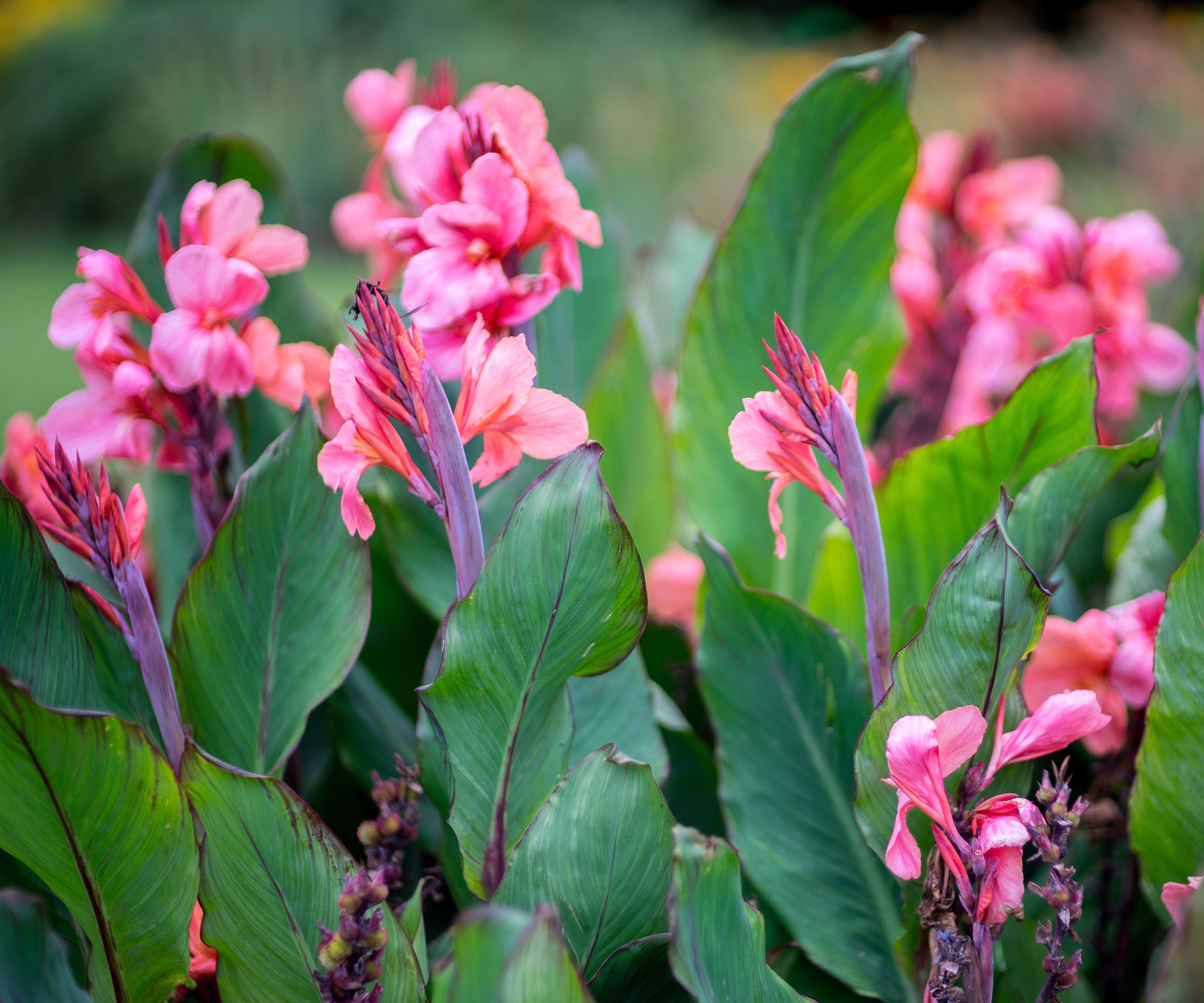
Loved for their showy flowers and large paddle shaped leaves, canna lilies are often to be found growing in clumps towards the back of herbaceous borders or in sizeable pots.
While flowers are produced in fiery shades of red, orange, yellow and pink it’s the decorative foliage that often steals the show. Large, prominently ribbed and gently tapering to the tip, these leaves come in a myriad of single shades – including lime green and near black-burgundy, or dazzle with bold bicolored stripes.
Canna plants will grow up to 6ft (1.8m) tall, depending on their variety and growing conditions.
Tender plants, most cannas will survive in the ground in USDA hardiness zones 8 to 11, before reappearing the following year. In cooler climates, zones 7 and below they are best grown as annuals or lifted before the first frosts and stored away, before replanting the following spring once temperatures have risen.
‘The quickest and most reliable way to grow canna lilies is from rhizomes,’ says plant expert and buyer Katie Sunderlage. ‘You can start your Canna indoors if you are in a colder climate.
'Choose a pot with drainage and that’s large enough to accommodate the Canna lily once fully grown, as they can get top heavy. Use a good free draining potting soil and place the rhizome horizontally about 2-3” below the surface of the soil.’

Operations Manager at Holland Group, managing the customer service department and purchasing. Katie has been in the green industry since 2005 in the Greater Milwaukee area, earning her degree in Horticulture in 2008. She has been able to share her love for plants working in multiple garden centers, in sales positions and most recently in an online retail platform at Holland Group.
Joe-Pye Weed
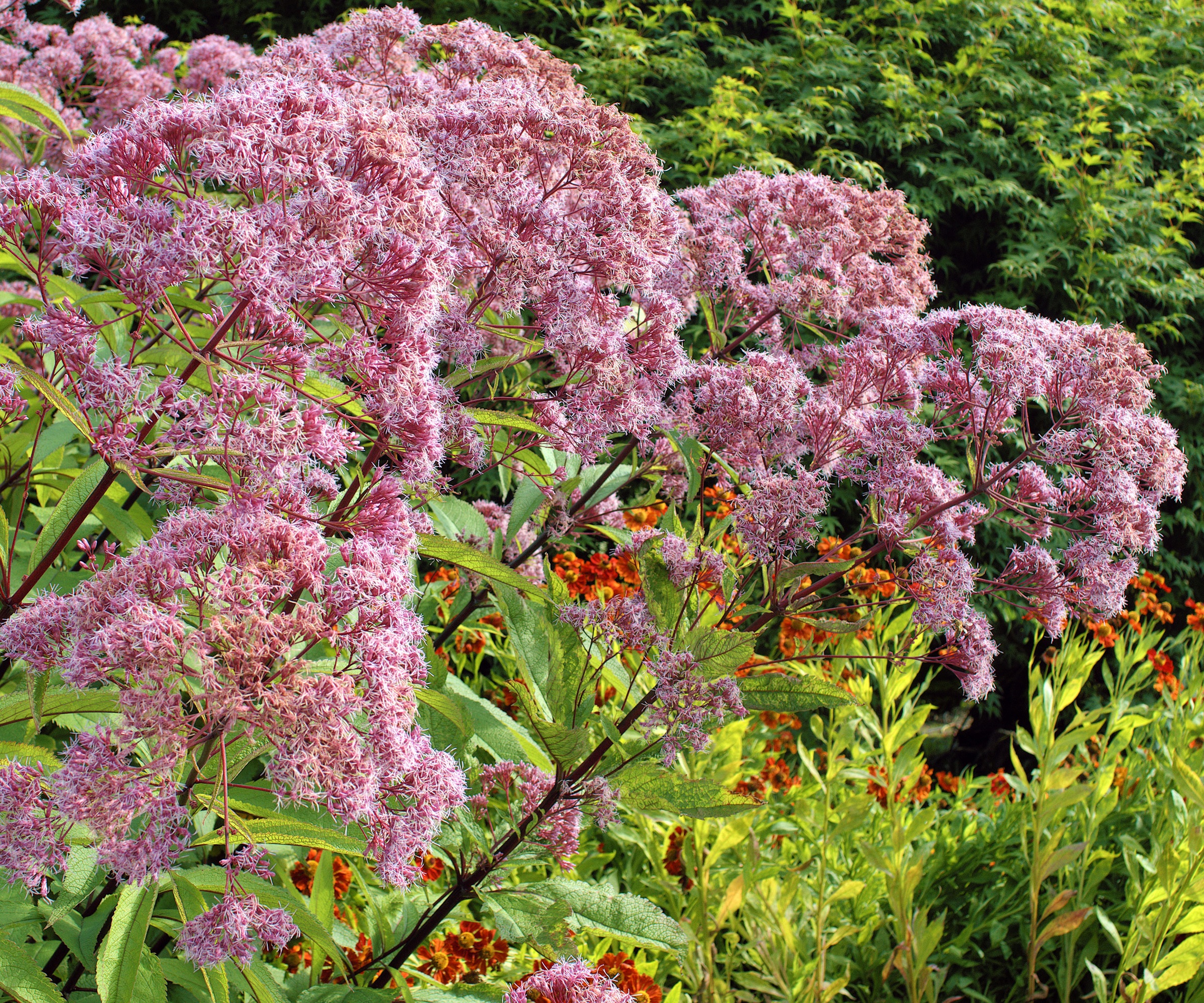
A good looking, native perennial Eupatorium perfoliatum, or Joe Pye Weed is a brilliant low fuss, high impact choice for the back of any border. Attracting late summer pollinators to its plumes of white and pink-purple flowers, it creates vast billowy clouds of soft colour that fade gracefully into a mass of stout, upright stems.
A dramatic sight, throughout winter before the long, green leaves reappear in spring, it retains its interest when little other plants remain.
Thriving in damp and boggy locations, in USDA hardiness zones 2-10, this sensational plant will reach around 4ft (1.2m) in height. Clump forming, with a spread of 3ft 2”(1m), it does need space and can quickly overwhelm smaller yards if not kept in check.
‘Plant in full sun to partial shade with moist, well-drained soil, and keep the soil consistently moist with regular watering,’ advises landscape designer Alexander Betz. ‘Deadhead to prevent self-seeding and cut back in late fall or early spring to allow new growth’.
Giant Scabious
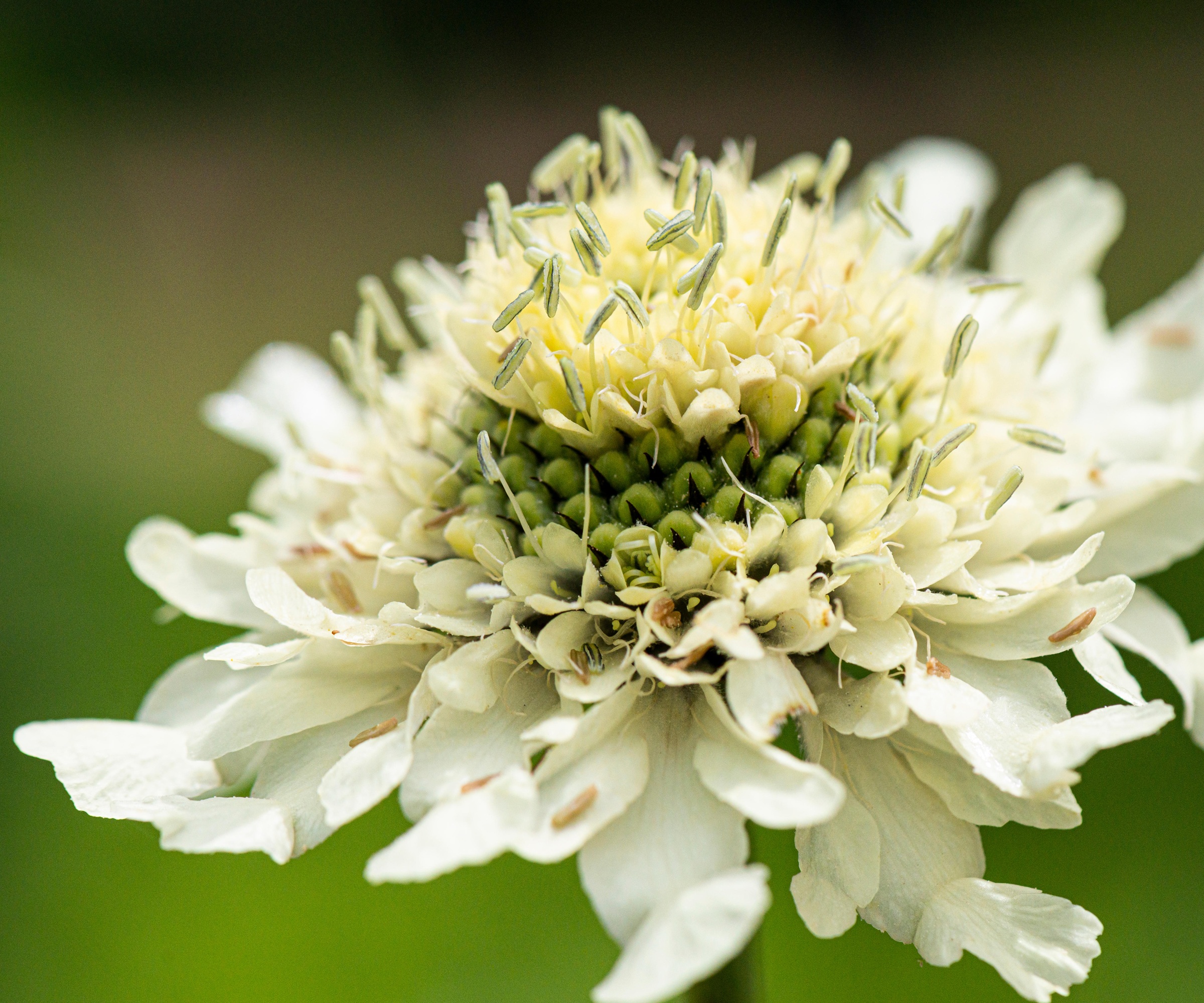
Simply gorgeous with its ruffled cream button-like flowers on top of wiry stems, a clump of giant scabious, or Cephalaria gigantea, is a breath-taking sight. The perfect option for creating an open, airy flower border, this perennial towers over its flowery neighbours at an impressive 5ft 9” (180cm) tall.
Flowers appear from June to September and, as long as the soil is well drained, it will thrive in sun or part shade. Giant Scabious is suited for growing outdoors in USDA zones 3 to 7 and is hardy down to temperatures of -40F (-40C).
Adored by bees and other pollinators, the flowers of this plant will give way to distinctive, almost spherical papery seed heads, that last well in winter.
One of the best plants for seedheads, scabious will add dramatic form and texture to an often-featureless yardscape. Leave intact until late winter, when the stalks can be cutdown to make way for new growth.
Cleyera
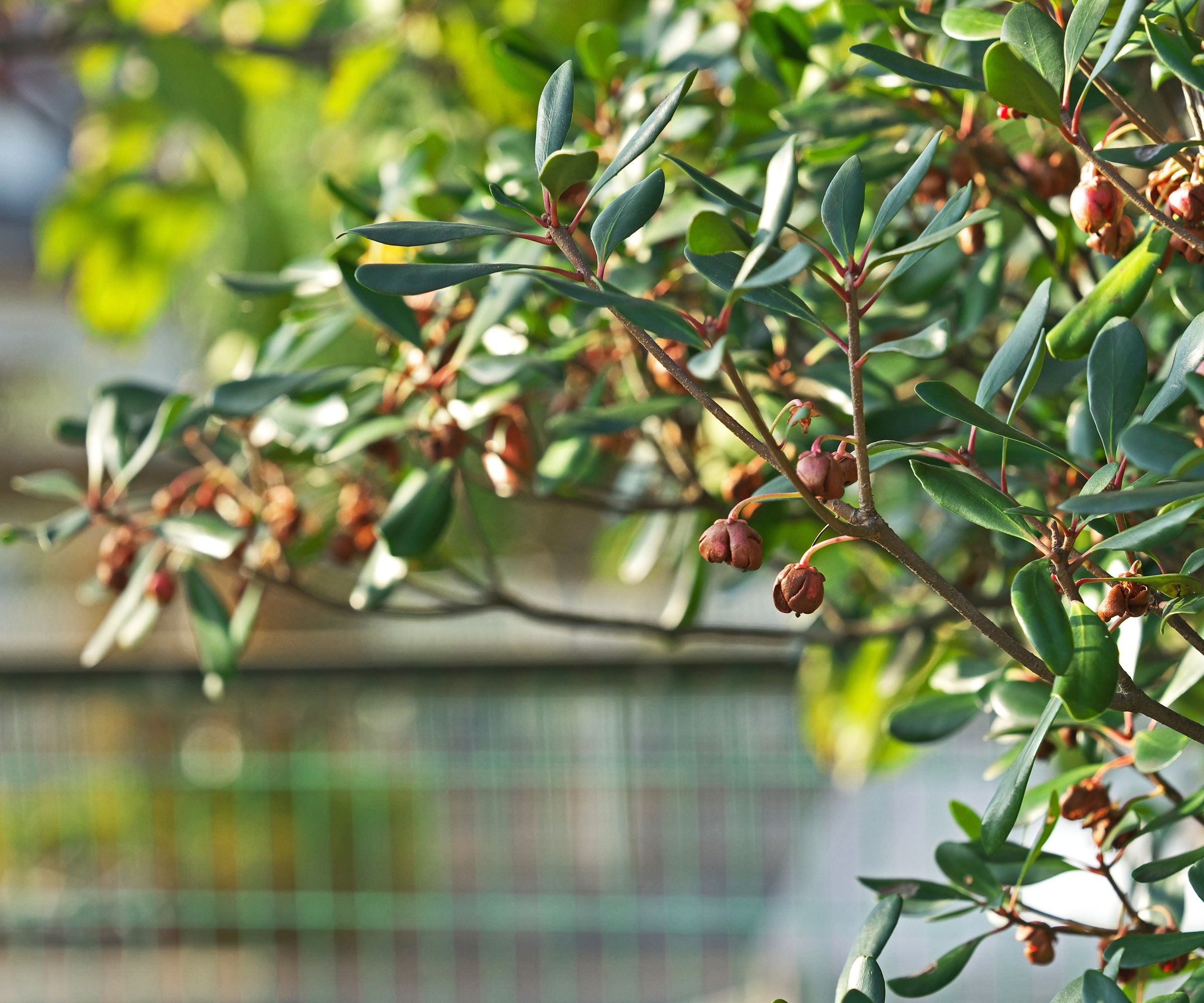
Often overlooked and underrated, Ternstroemia gymnanthera 'Sotall' is a fast growing, tolerant shrub that is fabulous at the back of any border. Preferring a full sun or part shady spot, this disease and heat tolerant evergreen is hardy in USDA zones 7a to 10b.
Growing up to a magnificent 15-20ft (4.5-6m) tall and 5-6ft (1.5 -1.8m) wide, it could be regarded as not the best choice for smaller yards, but thankfully that’s not the case.
‘For any gardener hoping to make a truly grand statement in the landscape, there’s nothing quite as captivating as giant plants. I’ve always appreciated their grandeur for the privacy they provide, while also creating a lush living backdrop for the rest of my garden design,’ says Garden design expert for Southern Living® Plant Collection Linda Vater.
‘Cleyera is a relatively carefree plant that quickly creates a dramatic and enduring presence with its fast growth habit. Bigfoot Cleyera TM or Ternstroemia gymnanthera 'Sotall' has especially dense, glossy foliage that responds well to pruning and shaping, making it a fabulous companion for shorter shrubs and sculptures.’ We like this Cordless handheld hedge trimmer from Walmart for making lightwork of large clipping tasks.
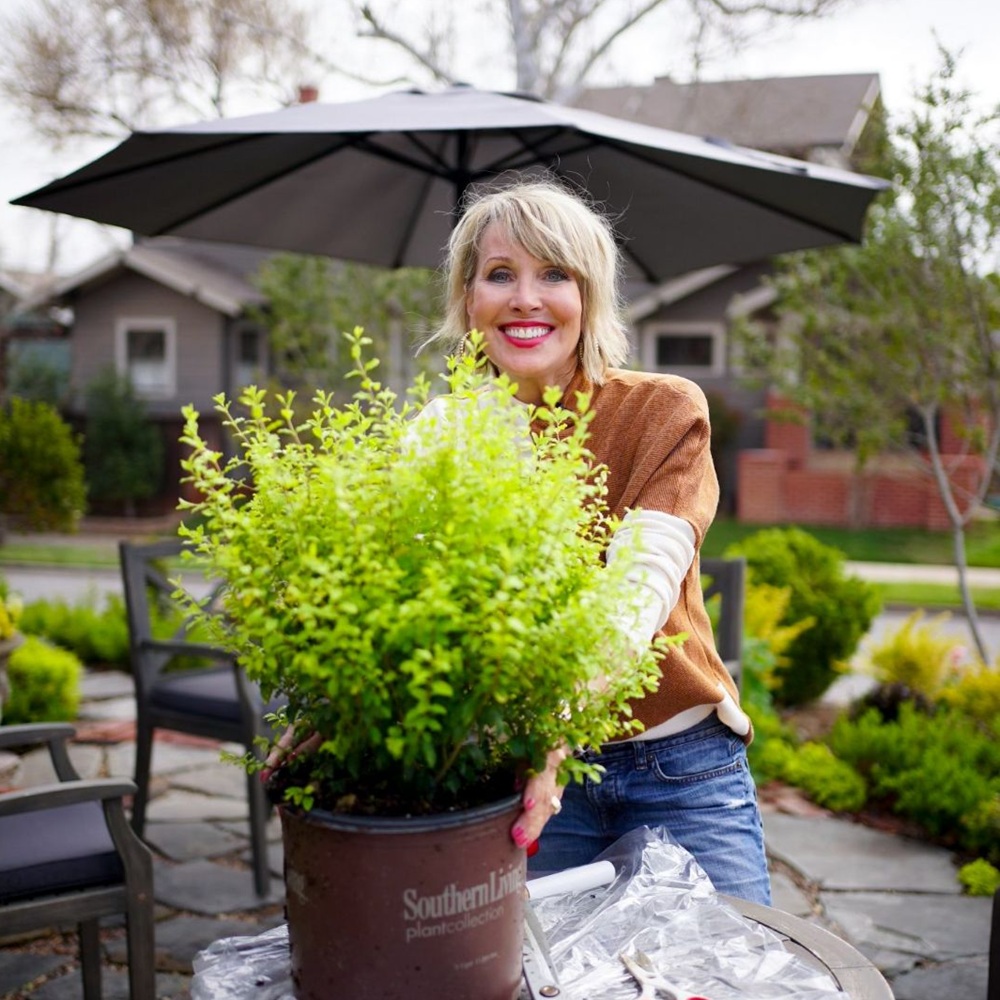
Linda is a self-taught garden designer, stylist, and content creator who views all of life through a gardening lens. Garden design expert for Southern Living® Plant Collection and founder of a popular YouTube channel dedicated to gardening, Linda is also the author of several books, including her latest publication: The Garden Journal: A 5-Year Record of Your Home Garden
If you, like us, have fallen for giant, statement plants, why not bring them into your home too with these houseplants for maximalists and discover which are the best unusual houseplants.

Journalist Jill Morgan has spent over 20 years writing and editing gardening, interior and property features. Titles she has worked on include The English Home, House Beautiful, Ideal Home, Houzz and Modern Gardens and she writes regularly for H&G as a Contributing Editor. Whilst she is a dab hand at renovation projects and DIY, she is happiest when out digging in the garden or planning a new border.
You must confirm your public display name before commenting
Please logout and then login again, you will then be prompted to enter your display name.